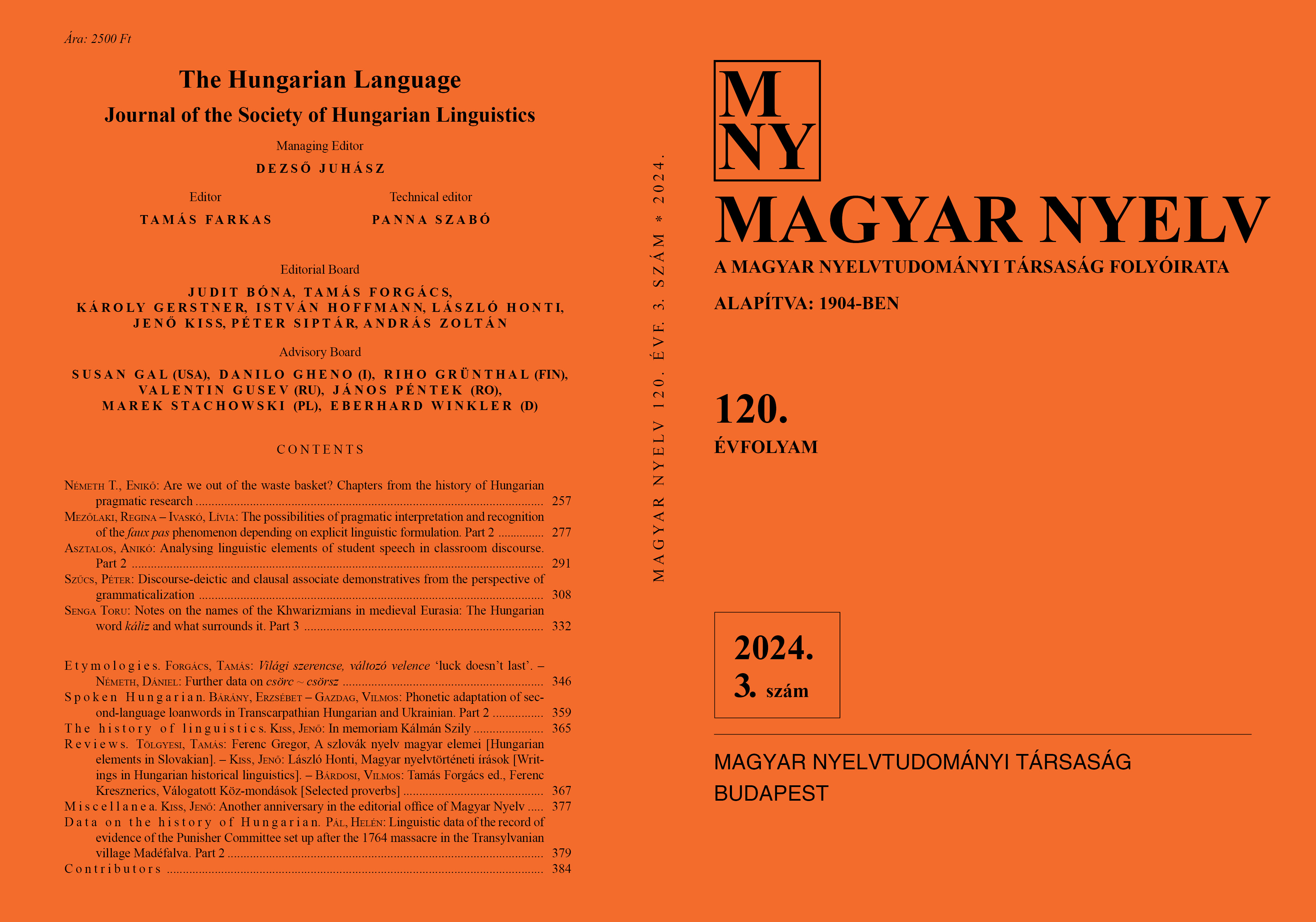Világi szerencse, változó velence ‘luck doesn’t last’
DOI:
https://doi.org/10.18349/MagyarNyelv.2024.3.346Keywords:
idioms, explanation of idioms, historical phraseologyAbstract
Older Hungarian proverb collections contain several proverbs in which the word szerencse ‘fortune’ appears together with the word velence, a component that rhymes with szerencse. All these proverbs refer to the ups and downs of fortune. In the earliest occurrences of these expressions, the word velence is written in lower case, but later on the proper name Velence is usually found. Consequently, Gyula Csefkó assumes that the component velence of these expressions is in fact a common noun, meaning ‘carousel’, because old carousels had many motifs evoking Velence (Venice in Italy). However, it is a serious weakness of this theory that the word velence in Hungarian does not have the meaning ‘carousel’. Nevertheless, what offers an explanation to the visual background of the proverbs quoted is the fact that the Hungarian common word velence was also the name of a kind of textile material, from which the lexeme meaning ‘weathervane’ could have secondarily developed, which, blowing to and fro, is perfectly suitable to illustrate the inconstancy of fortune.
Downloads
Published
Issue
Section
License
Copyright (c) 2024 Tamás Forgács

This work is licensed under a Creative Commons Attribution-NonCommercial-NoDerivatives 4.0 International License.
Magyar Nyelv is a Diamond Open Access periodical. Documents can be freely downloaded and duplicated in an electronic format, and can be used unchanged and with due reference to the original source. Such use must not serve commercial purposes. In the case of any form of dissemination and use, Hungarian Copyright Act LXXVI/1999 and related laws are to be observed. The electronic version of the journal is subject to the regulations of CC BY-NC-ND (Creative Commons – Attribution-NonCommercial-NoDerivatives).
The journal permits its authors, at no cost and without any temporal limitation, to make pre-print copies of their manuscripts publicly available via email or in their own homepage or that of their institution, or in either closed or free-for-all repositories of their institutions/universities, or other non-profit websites, in the form accepted by the journal editor for publication and even containing amendments on the basis of reviewers’ comments. When the authors publicize their papers in this manner, they have to warn their readers that the manuscript at hand is not the final published version of the work. Once the paper has been published in a printed or online form, the authors are allowed (and advised) to use that (post-print) version for the above purposes. In that case, they have to indicate the exact location and other data of the journal publication. The authors retain the copyright of their papers; however, in the case of an occasional secondary publication, the bibliographical data of the first publication have to be included.



